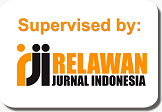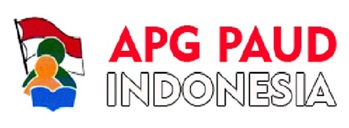STRATEGI PENGEMBANGAN KREATIVITAS ANAK USIA DINI DIMASA PANDEMI
Abstract
Development in early childhood is marked by changes in behavior and abilities. The development of creativity in early childhood is one of the most important developments to pay attention to. Creativity is a person's interaction with the environment to create methods or products that are imaginative and have benefits for solving problems. Children's creativity is surrounded by unique ideas and the growth of imagination and fantasy. Creative children are sensitive to stimulation. To develop children's creative abilities, strategies are needed that are in accordance with the abilities and situations of early childhood today. The pandemic situation requires teachers to be more creative in designing learning strategies for early childhood. This study aims to determine the strategy of Pelita Sari Kindergarten teachers in developing early childhood creativity during the pandemic. This research method is descriptive qualitative. The results of this study describe the strategies of Pelita Sari Kindergarten teachers in developing early childhood creativity during the pandemic. The strategies used by the teacher are more and consistently use the strategy of developing creativity through creating products (hasta work). Through real work, not only creativity will develop, but cognitive abilities will also be well facilitated. Children will use their imagination to form a certain building or object according to their imagination in craft activities. In their manufacture they use a variety of different materials can use materials that are easily found. Every child is free to express their creativity, so we will get different results from one child to another.
References
Debeturu, B., & Wijayaningsih, E. L. (2019). Meningkatkan Kreativitas Anak Usia 5-6 Tahun melalui Media Magic Puffer Ball. Jurnal Obsesi :Jurnal Pendidikan Anak Usia Dini, 3(1), 233.
Fadli, H. 2021. Strategi Pembelajaran Anak Usia Dini Di Masa Pendemi Covid-19. Jurnal Mahasantri Volume 1, Nomor 2, Maret 2021.
Fakhriyani, D. V. 2016. Pengembangan Kreativitas Anak Usia Dini. Jurnal Pemikiran Penelitian Pendidikan dan Sains Didaktika Vol. 4, No. 2, Desember 2016
Huda, K. & Munastiwi, E. 2020. Strategi Orang Tua Dalam Mengembangkan Bakat Dan Kreativitas Di Era Pandemi Covid-19. Jurnal Pendidikan Glasser Vol 4 No. 2 2020.
Kau, M. A. 2017. Peran Guru Dalam Mengembangkan Kreativitas Anak Sekolah Dasar. In Proceeding Seminar Dan Lokakarya Nasional Bimbingan Dan Konseling 2017, 1:157–66.
Nisa, T. F. & Fajar, Y. W. 2016. Strategi Pengembangan Kreativitas Pendidikan Anak Usia Dini Dalam Pembelajaran. Jurnal PGPAUD Trunojoyo, Volume 3, Nomor 2, Oktober 2016.
Priyanto, A. 2014. Pengembangan Kreativitas Pada Anak Usia Dini Melalui Aktivitas Bermain. Jurnal Ilmiah Guru Caraka Olah Pikir Edukatif, no. 2.
Pusdiklat Kemdikbud. (2020). Surat Edaran Mendikbud No 4 Tahun 2020
Tentang Pelaksanaan Kebijakan Pendidikan Dalam Masa Darurat
Penyebaran Corona Virus Disease (Covid-19). Pusdiklat Pegawai
Kementerian Pendidikan dan Kebudayaan. Https://Pusdiklat.Kemdikbud.Go.Id/.
Rachmawati, Y. & Kurniati, E. (2017). Strategi Pengembangan Kreativitas Pada Anak. Jakarta: Kencana.
Renawati & Suyadi. 2021. Pengembangan Kreativitas Anak Usia Dini di Masa Pandemi Covid 19 melalui Alat Permainan Edukatif Papan Pintar dari Kulit Kerang. Journal on Early Childhood Vol 4 No. 1 2021, Pages 22 – 27.
Sari, L. P. P., Antara, P. A., & Ujianti, P. R. 2017. Pengaruh Strategi Permainan Imajinatif Terhadap Kreativitas Anak Kelompok B Gugus III Kecamatan Buleleng. e-Journal Pendidikan Anak Usia Dini Universitas Pendidikan Ganesha Jurusan Pendidikan Guru Pendidikan Anak Usia Dini (Volume 5. No. 2 - Tahun 2017).
Sugiyono. 2014. Metode penelitian pendidikan pendekatan kuantitatif, kualitatif dan R&D. Bandung: Alfabeta.

This work is licensed under a Creative Commons Attribution-ShareAlike 4.0 International License.
Authors who publish with this journal agree to the following terms:
- Authors retain copyright and grant the journal right of first publication with the work simultaneously licensed under a Creative Commons Attribution-ShareAlike 4.0 International License that allows others to share the work with an acknowledgement of the works authorship and initial publication in this journal.
- Authors are able to enter into separate, additional contractual arrangements for the non-exclusive distribution of the journals published version of the work (e.g., post it to an institutional repository or publish it in a book), with an acknowledgement of its initial publication in this journal.
- Authors are permitted and encouraged to post their work online (e.g., in institutional repositories or on their website) prior to and during the submission process, as it can lead to productive exchanges, as well as earlier and greater citation of published work (See The Effect of Open Access).











.png)














